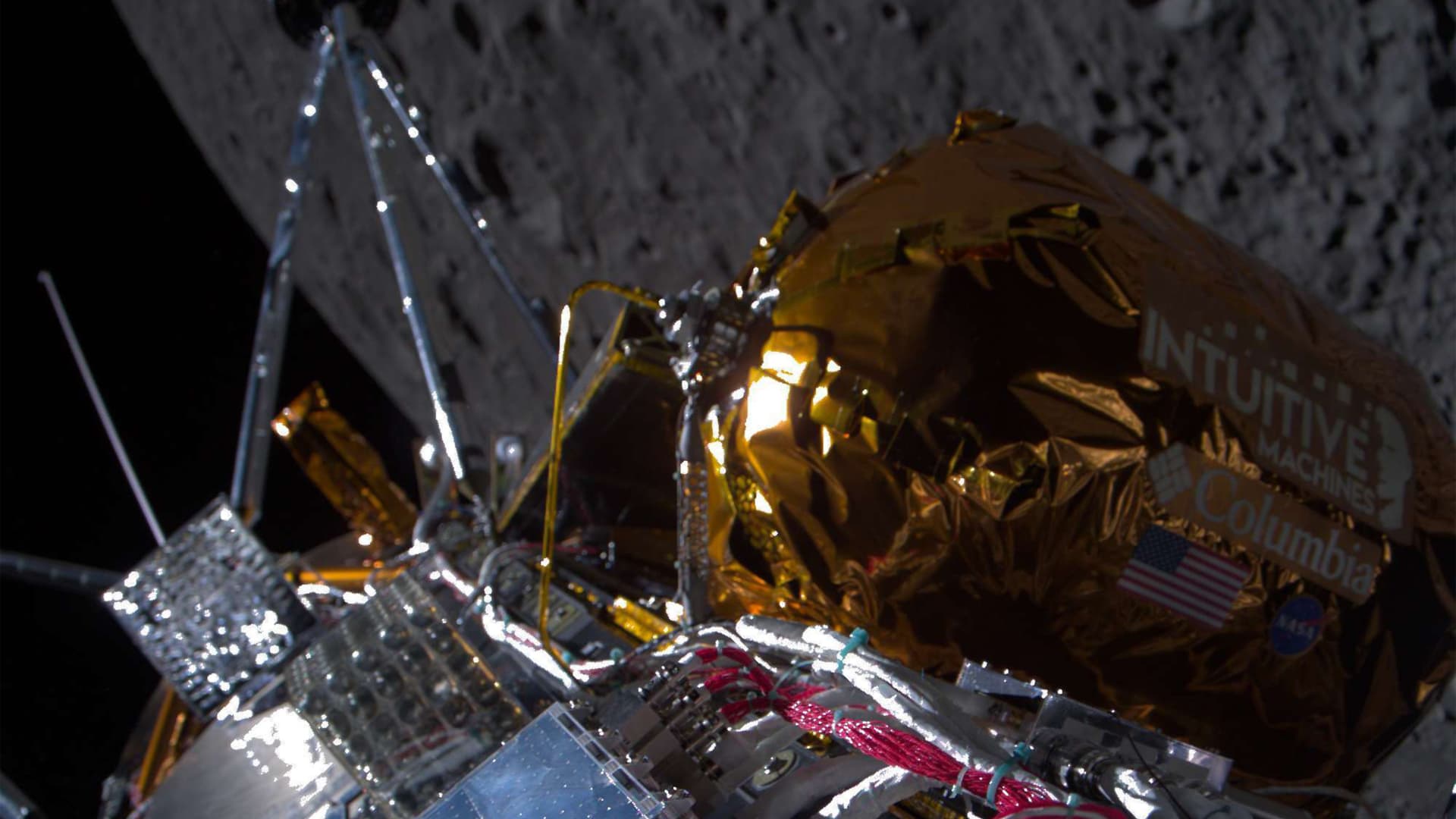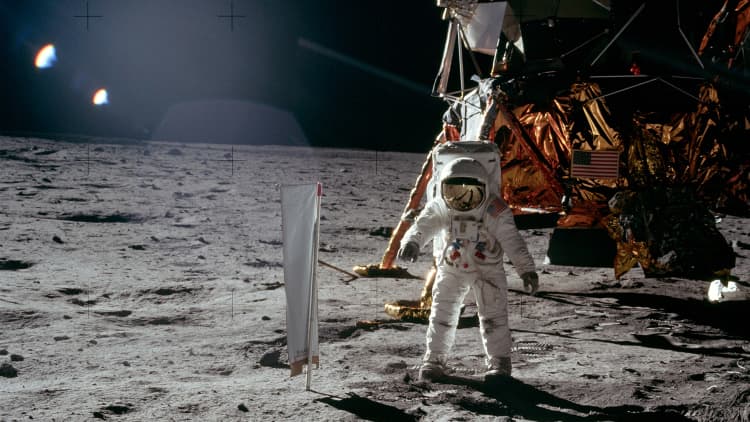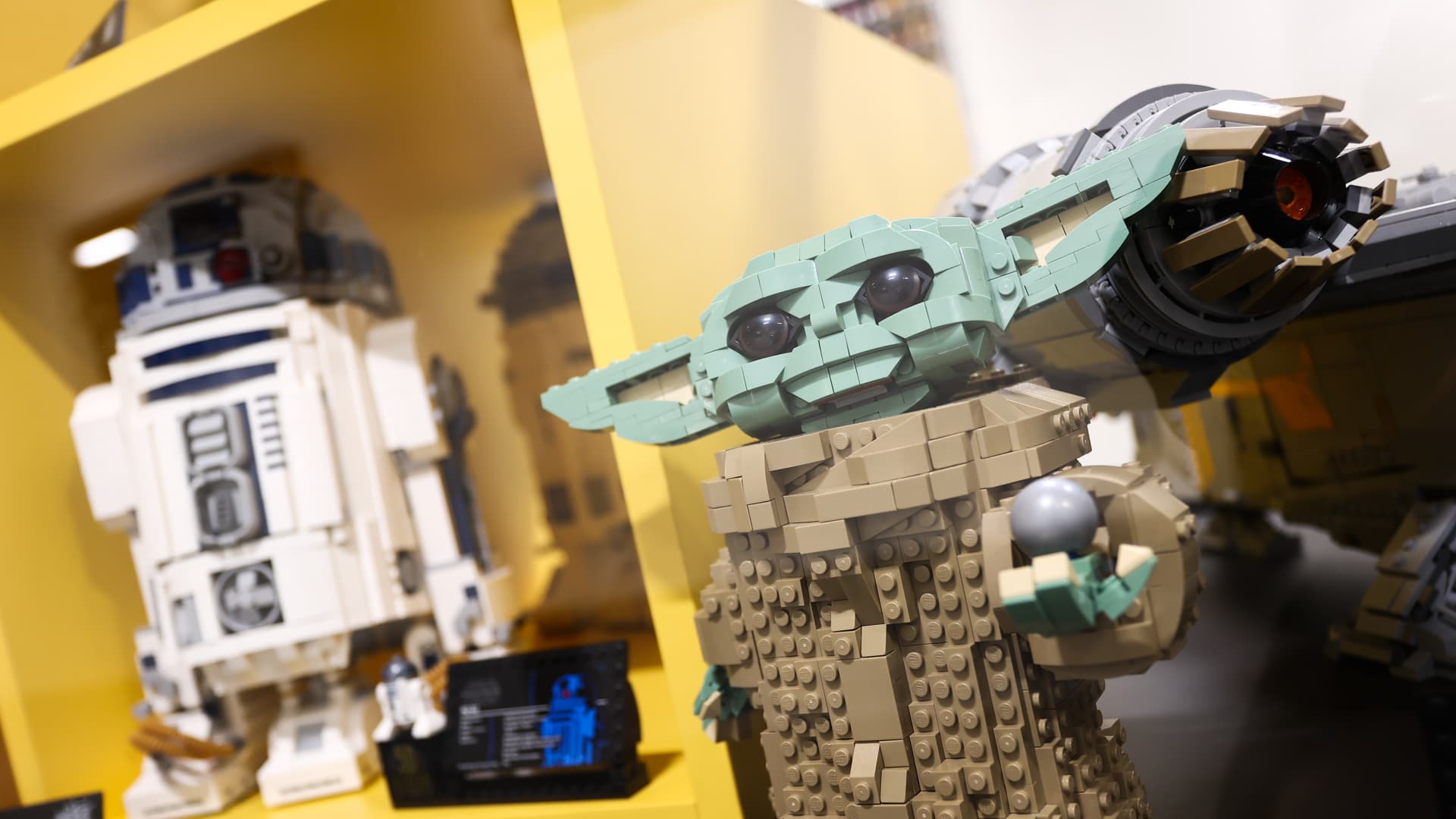
The IM-1 lander “Odysseus” in lunar orbit on Feb. 21, 2024.
Intuitive Machines
Intuitive Machines is building on the successes of its inaugural moon mission, reporting fourth-quarter results on Thursday and saying it now has “sufficient capital for the near term.”
The lunar company revealed that its cash balance at the end of the year was just $4.5 million – partly the result of paying down $12 million in debt off its balance sheet. Following its historic February moon landing, the company saw about $50 million in “warrant exercises from an institutional investor,” and raised $10 million through equity.
Intuitive Machines highlighted that its cash balance of nearly $55 million on March 1 was “the largest balance relative to any quarter-end since the Company’s IPO.”
“We come into 2024 from a position of financial strength. We’ve expanded our cash position with lower debt, we’ve grown backlog, our margins are improving, and our future opportunities are brighter than ever,” Intuitive Machines interim Chief Financial Officer Steve Vontur said on the company’s earnings call.
Intuitive Machines’ net income for the fourth quarter was $4.6 million, down 63% from $12.4 million in the same period a year prior. Revenue was also lower for the quarter, at $30.6 million, representing a 20% year over year drop from $38 million a year ago.
Shares of Intuitive Machines slipped 2% in trading Thursday from its previous close of $5.61.
The company pointed to its recently improved backlog, as well as a number of upcoming potential NASA contracts, as further bolstering the momentum gained by the company’s inaugural moon mission.
Overall, Intuitive Machines had a nearly $270 million backlog at the end of the year.
“We expect sales to expand significantly this year based on the current backlog,” Vontur said.
Intuitive Machines began realizing revenue from a multiyear engineering services contract from NASA’s Goddard Space Flight Center in Maryland, with $12.5 million from work done in December – a monthly rate the company expects to continue in the year ahead.
Additionally, the Houston-based company highlighted three upcoming potential NASA contract awards, including to build an astronaut-capable moon rover, provide lunar data services, and additional moon mission contracts.
The first of those awards, NASA’s Lunar Terrain Vehicle program, is scheduled to be announced on April 3. The LTV effort is planned to be a 10-year, $4.5 billion program to build a car-like rover to transport astronauts around the surface of the moon. Intuitive Machines is leading a team that includes Boeing, Northrop Grumman, and Michelin and priced its bid for a preliminary design contract at about $30 million over the course of a year. The company expects NASA will award multiple design contracts.
“We’re very confident in our capability and our design, and we’re looking forward to hearing about that,” Intuitive Machines CEO Steve Altemus said.
Preparing for second mission
The landing strut of Intuitive Machines’ Odysseus lunar lander absorbs first contact with the lunar surface during its landing at the Malapert A site on the Moon, as the liquid methane and liquid oxygen engine continues to throttle, February 22, 2024.
Intuitive Machines | Via Reuters
Intuitive Machines flew its first cargo mission, called IM-1, to the moon last month. The lander touched down successfully before tipping over, but was still able to operate for about a week on the surface in a historic first for a private mission.
Intuitive Machines completed a review of its first lunar cargo mission, Altemus said, and has now “identified the areas that needed adjustment” for its second effort.
“We are still planning for a 2024 mission for IM-2,” Altemus said.
The company highlighted a number of milestones completed toward the launch of the IM-2 flight, including testing of different payloads Intuitive Machines’ lander will carry – including its “rocket-powered drone” Micro Nova and a NASA ice mining drill.








